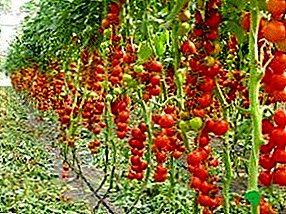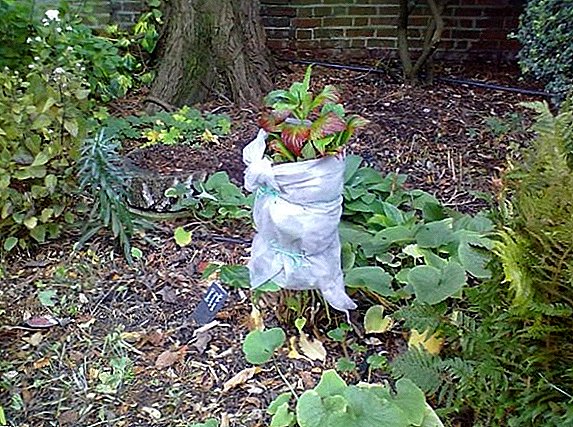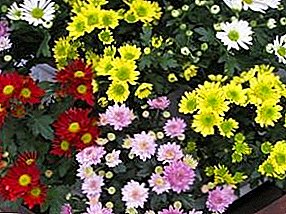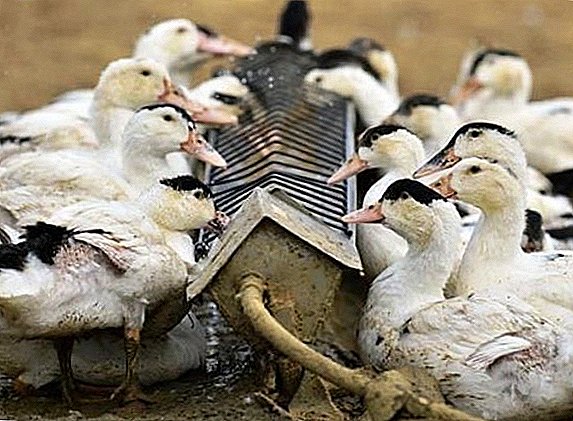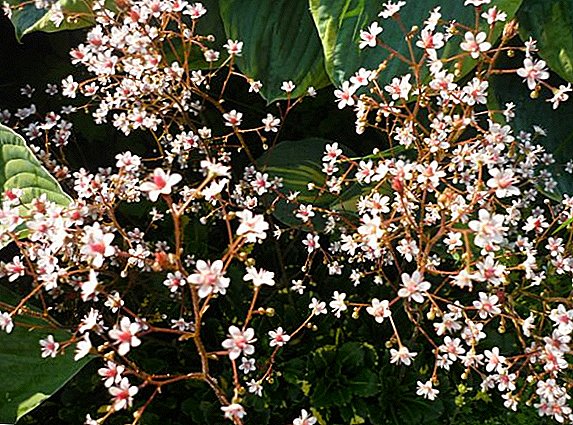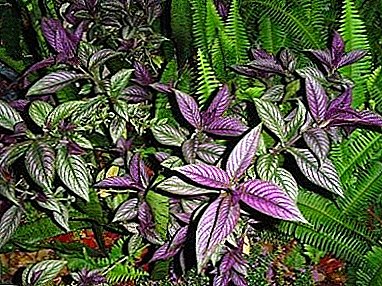
"Strobilantes" is an exotic flower. In growing at home is very difficult.
We recommend only professional flower growers.
The plant responds well to top dressing, frequent watering and good lighting.
General description of the plant
"Strobilantes" is a perennial shrub. Coming from the family acanthus. It has more than 260 different subspecies. The most common subspecies is Dyer.
Grow it very difficult. Therefore, this representative of flora is recommended only for experienced flower growers. With age, the flower may lose its attractiveness. Therefore, it is recommended to update it with new colors.
But with a stable pruning ornamental bush looks amazing and compact. His grace is concentrated on bright exotic leaves. In shape, they are elongated and sharp. Have jagged edges up to 10-14 cm.
The lower part of the leaves is purple, above it is gray maroon. The leaves have bright emerald veins. The plant blooms very rarely. Flowers miniature and blue tint.
A photo
The photo shows the plant "Strobilantes":



Home care
Pruning
 Pruning plants produce only for decoration. With proper care, the flower looks elegant and neat. Cut the side stalks.
Pruning plants produce only for decoration. With proper care, the flower looks elegant and neat. Cut the side stalks.
It is important when cutting not to touch the main trunk. Otherwise, the plant may die.
Also, the lower leaflets are sometimes removed. So the plant gets more light.
Watering
Watering should not be very frequent. It is important not to pour the plant. Otherwise, the roots may rot and the flower may die. Water should be soft water at room temperature.
It is important that the water does not contain any chemical impurities. Chemicals can damage the root system, and the flower can stop growing. It is important to wait for watering to dry the top layer of soil.
Reference! In hot weather, irrigation increases, in winter - reduce.
The air next to the flower can be sprayed from the sprayer. Also the containers are placed on wet pebbles or expanded clay.
Landing
For landing it is necessary to choose free capacities. At the bottom is laid drainage of broken brick. If you do not make a drainage system - the plant may die from rotting of the root system.
The soil must be selected fortified. You can use the purchase of primer for indoor flowers. Fine-grained river sand is poured at the bottom. Next is a layer of earth. A plant is placed in the center.
Then falls asleep and feeds. Top dressings can be added to water for waterings. After planting, put the plant in a quiet windless place.
Transfer
This pet is transplanted as the root system grows. To do this, use wide capacity. Soil can be used purchased. Drainage of expanded clay or pebbles is lined to the bottom.
Breeding
 Plant reproduction occurs by cutting. The stalks are cut in late spring.
Plant reproduction occurs by cutting. The stalks are cut in late spring.
The stalk must be cut so that there are 3-4 leaves (internodes) on it, its length was at least 7 centimeters, the distance from the knot to the lower cut is 2 centimeters.
Then they must be immersed in the solution "Kornevina". You can also make this solution yourself from aloe vera juice or grated potatoes. Treated stems need to be planted in peat soil.
In the substrate add fine-grained sea sand, humus. Root germination can be done in sand, soil, water, and a mixture of peat and sand in equal proportions. Cuttings are planted in the substrate for 1-2 centimeters.
Then landing covered with a glass jar, cut a plastic bottle or cellophane. It is important that the capacitance passes light. The mini-greenhouse is installed in a lighted warm place. It is necessary to constantly maintain the required temperature above 20 ° C. 2-3 times a week, the airhouse is ventilated. After complete rooting of the flower, the flower is transplanted into large containers.
Temperature
The plant loves a stable temperature. The best option is 19-23 ° C. In winter, the temperature should not fall below 11 ° C. It is fraught with hypothermia.
Lighting
The plant loves natural light. Can not be a long time in the sun. Sun rays can cause severe burns. In winter, the time the flower must be specially dosachivat.
Benefit
 The plant can absorb negative emotions. Feng Shui experts and soothsayers ascribe magic properties to it.
The plant can absorb negative emotions. Feng Shui experts and soothsayers ascribe magic properties to it.
The plant is able to remove the excitement of man, depression, routine, the wheel of failure.
It also serves as an excellent indoor decor. Thanks to the exotic leaf coloring, the flower attracts a lot of attention and attention.
Diseases and pests
The plant is prone to whiteflies. These small pests cover the leaves of the plant. Powdery pollen appears. At the same time leaves can strongly become colorless and fall off.
At the first symptoms, the leaves are washed with soap. Then the plant is sprayed with chemical agents. After the pests drink the poisoned juice of the flower, they immediately disappear. You can also install traps and adhesive tapes.
Important! Sprayed flowers must be kept away from pets. Chemicals act not only on insects. In case of poisoning of a pet with poisonous sap of the plant, an urgent need to contact a veterinarian.
"Strobilantes" can be defeated by whiteflies. The plant loves stable temperatures, good lighting and calm rooms. Prefers frequent watering with soft water at room temperature. Propagated by cuttings. It grows well on loggias, balconies, greenhouses and solar windowsills.


